How to Grow Wisteria Vine? Flowers, Varieties, Propagation and Care
Wisteria is one of the most popular climbing garden plants. It's also known as wistaria or _glycine_, although these names are rarely used. The plant is well-known from the abundance of flowers it develops – the characteristic blooms can be spotted from quite a distance. Are you wondering how to grow a healthy wisteria? Find out and take a good care of this magnificent plant.

Wisteria – what are the origins of this plant?
Wisteria (Wisteria speciosa), also known as glycine (Glycine frutescens) or wistaria, is one of the oldest plants currently cultivated in gardens. The species originated from North America, where it was known under the second mentioned name. When it came to Europe, it gained its most common name. As some sources note, wisteria species grow in Asia as well.

What does wisteria look like?
Wisteria is a creeping plant, quite tall, as it can reach up to 10 meters. Additionally, it grows quite fast. Its extensive width and lush flowers are characteristic features which differentiate this plant from others. Smaller wisterias are just a few centimeters tall, while older plants reach about 1 meter in height.
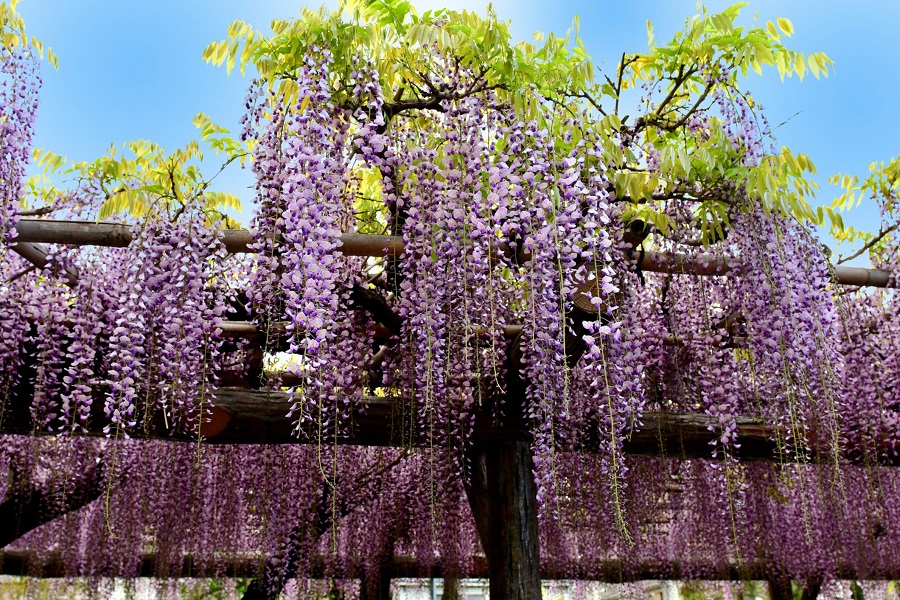
Wisteria – popular varieties
The basic distinction of wisterias involves dividing them into different species. In this case, one can, distinguish the following popular types:
- Chinese wisteria (Wisteria sinensis)
- Japanese wisteria (Wisteria floribunda)
Although both varieties are quite similar, they differ in leaves, blooming times and the length of the branches.
The two mentioned groups contain the most popular cultivars grown in gardens. They are, for example:
- Japanese wisteria ‘Noda’
- Japanese wisteria ‘Alba’
- Japanese wisteria ‘Honbeni’
- Japanese wisteria ‘Domino’
- Chinese wisteria ‘Prolific’
- Chinese wisteria ‘Amethyst’
Apart from the two mentioned species, there are other wisteria varieties as well. They include:
- Silky wisteria ‘Wisteria brachybotrys’
- American wisteria ‘Wisteria frutescens’
- Wisteria x formosa – a hybrid of Chinese and Japanese wisteria.

What is the best location for a wisteria?
Wisteria has some special requirements about the location it grows at. A sunny and warm place is the best option for this plant. It develops better in such conditions. Even a light shade might reduce its blooming rate. Additionally, the location should be protected from the wind. Intense blows might damage the plant’s long branches.
The best soil for wisteria vines
The soil in which a wisteria is growing is just as important as the location. The plant prefers very fertile soil, preferably rich in humus. It should also be quite loose. As for the pH level, it should be slightly acidic or neutral. The soil should be relatively moist – not too wet and not too dry.

Wisteria on pergola – is it a good solution?
Wisteria is a perfect decoration for a pergola, a balcony, or a patio. Because it grows fast, it looks amazing after just a year from planting in such a place. Note that a wisteria planted next to a pergola doesn’t need any additional support. Just control the plant’s branches, making sure they rest against the construction’s elements.
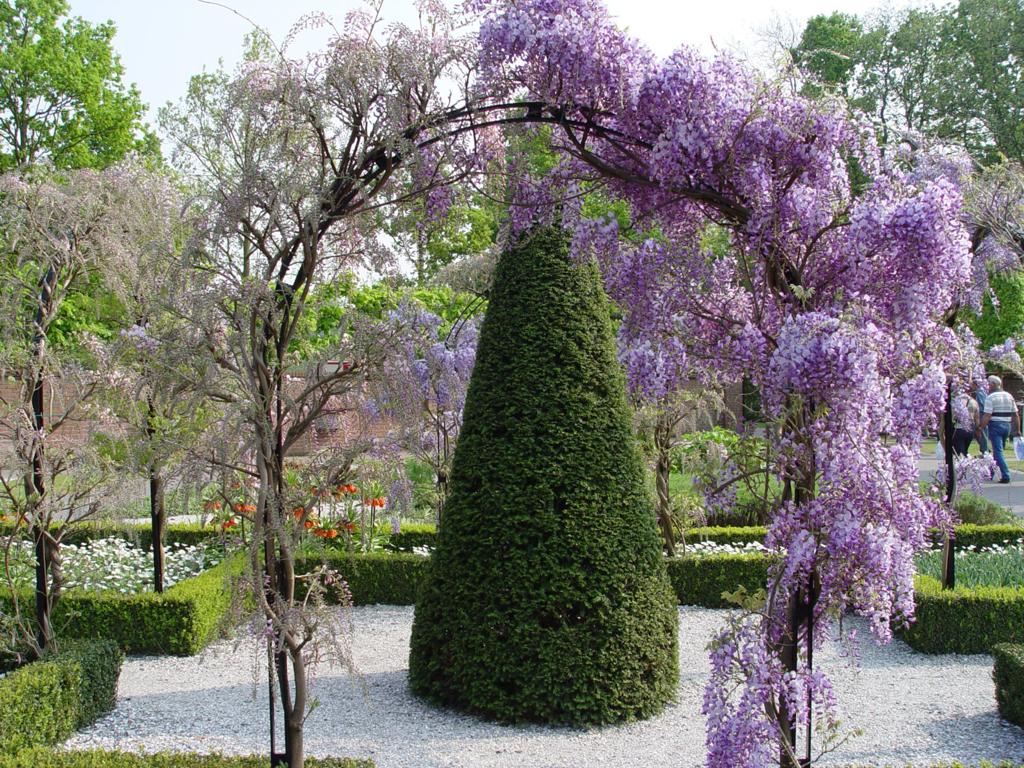
How to grow wisteria in pots?
Many people wonder whether wisteria in pots is a good idea. Planting this species directly in the ground is definitely a much more popular solution – but it doesn’t mean it cannot be planted in containers as well. But if you decide on such a solution, remember the plant needs enough space for a proper growth. Plant young seedlings in large pots, to avoid having to replant them after just a few months.
When to plant wisteria?
When planting wisterias, one should stick to the recommended periods, that is, spring or fall. Also, note that wisteria might not bloom right away in the next season. In some cases, one has to wait even a few years for the flowers.
When does wisteria bloom and what color are the flowers?
Regardless of what wisteria variety you pick, it always blooms more or less during the same period – between May and June. The only difference between various species is that some develop flowers earlier, e.g., at the beginning of May, while others grow them later, at the beginning of June.
As for the colors, most varieties develop flowers in different shades of purple. There are some exceptions, though. Some wisteria vines develop flowers of the following colors:
- white,
- pink.

Is wisteria frost-resistant?
Wisteria is a highly resistant plant which can endure low temperatures and strong frost. It can manage even in -20°C (-4°F). Note that the plants have to be prepared correctly before winter – especially young ones. Make sure to secure the vines using straws or agrotextile.
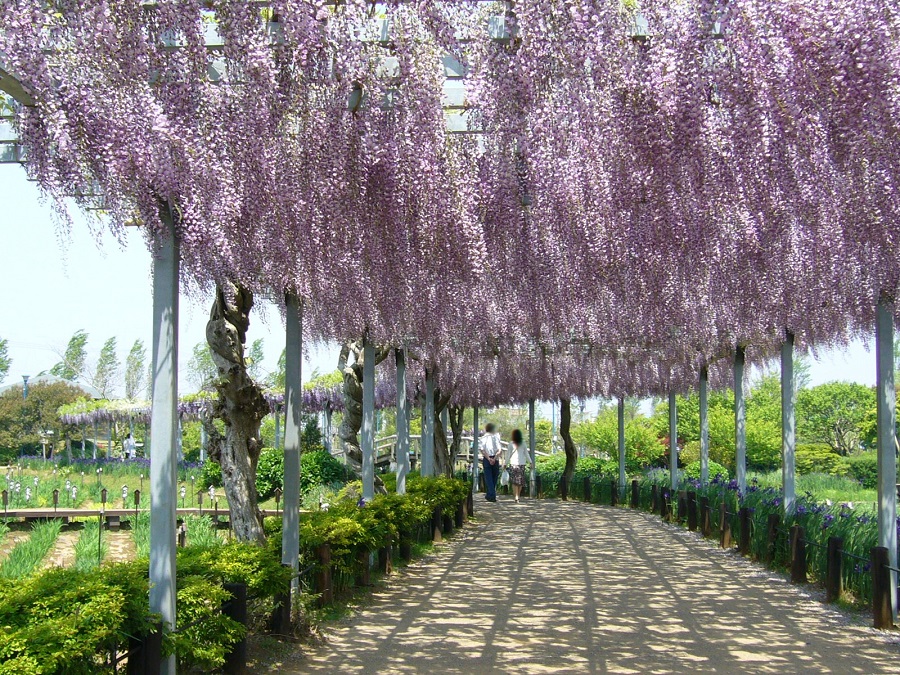
How to propagate wisteria?
There are two methods for propagating wisterias. The most popular one involves retrieving green cuttings, rooting them and planting in containers. The other is called air layering. It doesn’t require cutting off the stems. It’s quick and easy. Just make a delicate cut in the stem you want to root and bury it in the ground. A new plant should grow out of it after some time.
What are the most common diseases and pests attacking wisteria?
Yellowing leaves are a sign that your wisteria is not developing properly. The reasons behind this are various. Sometimes it’s a result of a mistake in the plant’s care, but it might also be caused by fungal diseases such as botrytis. Fortunately, it’s quite easy to resolve. If the disease is in its initial stages, natural sprays should tackle the issue. If the problem is more advanced – don’t wait. Only chemical products can help.
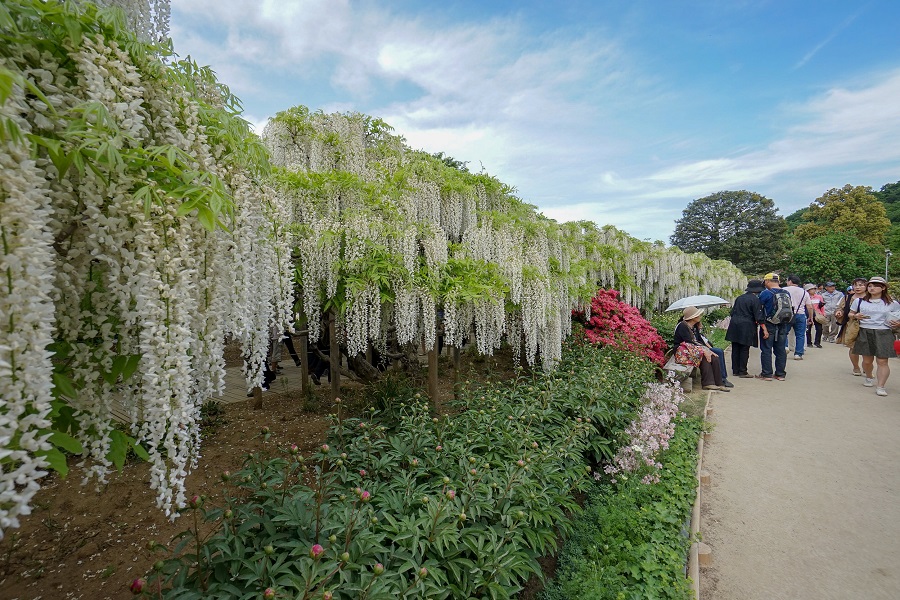
As for pests, wisteria is quite resistant to them. Of course, insects such as aphids or spider mites might still attack it. But they aren’t a concern you wouldn’t be able to resolve yourself.
Wisteria – price
The price of wisteria mostly depends on the variety you want to purchase, and on how large the seedling is supposed to be. Smaller plants are available in gardening stores for $20 and more. Larger wisterias cost even $50. It’s not a lot, considering how quickly the plant spreads, and that it’s a perennial.
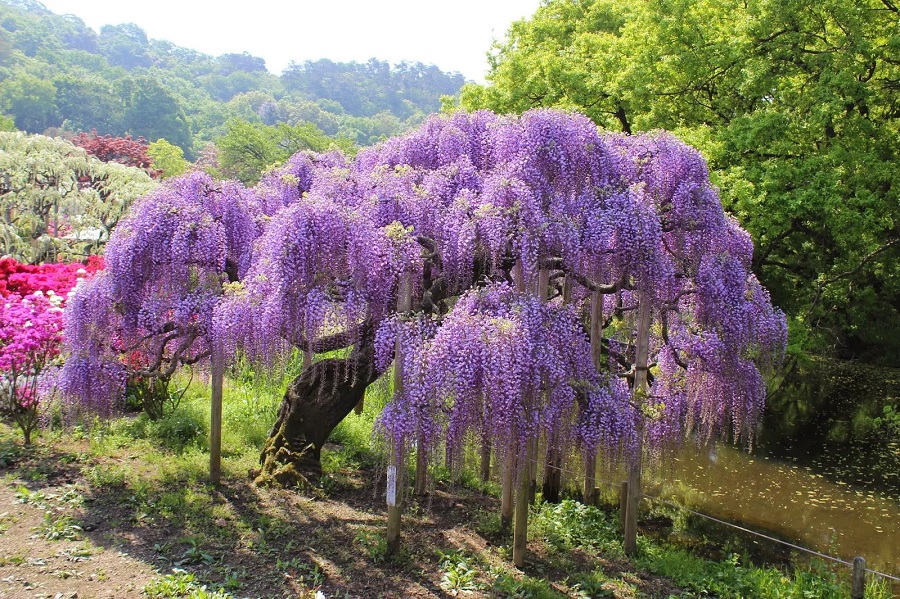
📍 When do wisterias bloom?
Wisteria blooms in May and June – the exact time depends on the variety. Flowers remain for about two months. You can deadhead dry flowers, which makes the plant stronger.
📍 When to plant a wisteria in the garden?
You can plant wisterias in spring and fall. Young, delicate plants will benefit from planting in spring, as thanks to this they won't be exposed to frost so soon.
📍 How long do wisterias bloom?
Wisteria blooms for about two months. Sometimes, if the plant is well cultivated, the flowers might remain for longer – even until autumn.
📍 Why won't my wisteria bloom?
Exposure to frost is the most common reason for the lack of blooming of wisterias. It might also be a sign of a disease, pests, or nutrients deficiency.
Featured articles




